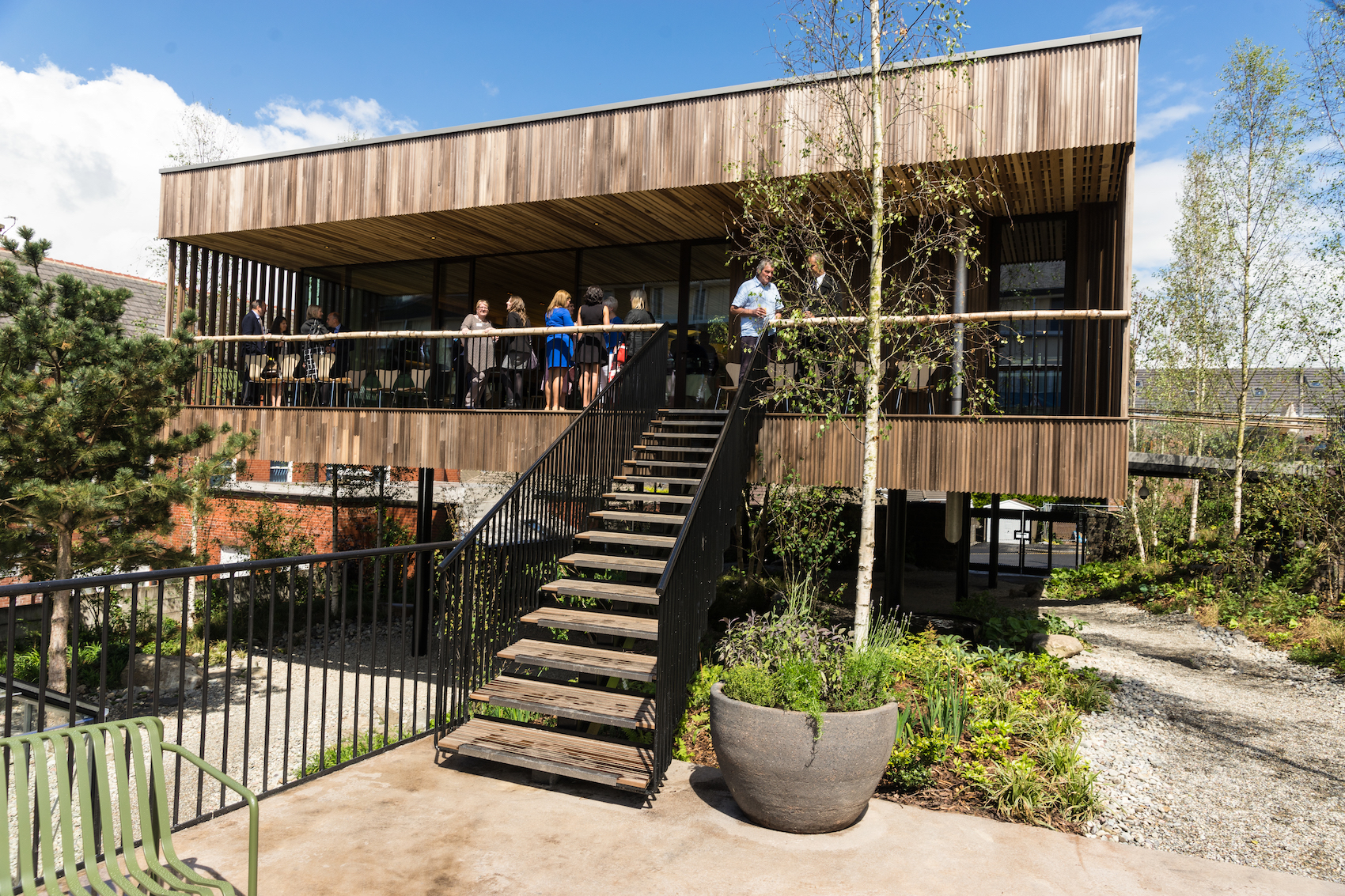AHEC explores the performance and aesthetic benefits of thermally modified timber.
In association with![]()
Maggie’s Centre Oldham by dRMM Architects (ph: Tony Barwell)
There is something inherently appealing about wooden buildings. They have a warmth, depth and sense of belonging to the Earth that man-made materials struggle to emulate. Humans have used timber to build dwellings since the dawn of civilisation, but until fairly recently, wood had become a relatively niche material in exterior architecture, cast aside in favour of seemingly ‘more durable’ but non-renewable options, such as concrete and steel.
However, as the need for sustainable construction materials becomes more urgent, and architects become increasingly enamoured of the nuanced textures and warm, natural appearance offered by hardwoods, timber is coming back into favour as an exterior material – and thermally modified timber has a big role to play in this.
The Black & White Building by Waugh Thistleton Architects (ph: Ed Reeve)
For an aesthetically-minded architect looking for the perfect combination of performance and sustainability, thermally modified timber – or TMT – is a winning proposition for use in exterior applications, such as cladding, decking, outdoor furniture – or even, in the case of The Black & White Building in London’s Shoreditch, designed by Waugh Thistleton Architects, solar shading. TMT is durable, dimensionally stable and it weathers to an attractive silvery grey. It is resistant to humidity, rot, most insects and, when treated, fire. Furthermore, TMT is renewable, which makes it a welcome addition to the conscientious engineer’s material palette and a sustainable retro-fit solution to existing building stock.
The Black & White Building under construction (ph: Fred MacGregor)
To create TMT, timber is first dried in a kiln, then intensively ‘baked’ in another stainless steel kiln. Depending on the species and thickness of the timber, over two or three days, the temperature is steadily raised to around 200ºC, while the oxygen is removed through the action of a vacuum or the introduction of steam, which prevents the wood from burning. This process removes the hemicelluloses and starches in the wood, eliminating the organic compounds that serve as food for both insects and fungi, and altering the timber’s properties to make it durable and dimensionally stable – in other words, less likely to buckle, split or move than untreated woods.
Maggie’s Centre Oldham by dRMM Architects (ph: Alex de Rijke)
The aesthetic effects of the process are not to be overlooked either. The action of the kiln darkens the timber, resulting in a variety of shades depending on the species of wood used. The result is often a beautiful, uniform, rich brown colour, reminiscent of tropical hardwoods. The exterior of the Oldham Maggie’s Centre, designed by Stirling Prize-winner dRMM Architects, is a particularly good example of the richly-textured finish that can be achieved with TMT.
In some ways, the process of thermal modification has antecedents in other traditional heat techniques used to modify exterior timbers. Employed in Japan for centuries, the practice of ‘shou sugi ban’ involves burning the outer surface of the wood to achieve a charred effect, which is often used in cladding houses. TMT offers similar durability to wood treated in this way, but provides a greater degree of control over the treatment.
(ph: Petr Krejčí)
Thermal modification can be applied to most timber species, although there is still a lot of experimentation to be done in this area to determine which perform best. Of the Northern American hardwood species, hard and soft maple, ash, birch and tulipwood – as recently featured on the Black & White Building – have all been proven to perform well. AHEC has also seen great success with thermally modified red oak.
With the confluence of a growing global appreciation for natural materials in our built environment, a rapidly spreading awareness of the need for sustainable construction materials and techniques, and an expanding understanding of the possibilities of timber as an exterior material, AHEC expects to see a lot more TMT featuring in architectural projects around the world – and is very happy to advise and assist on its sourcing and application.
Contact Details
AHEC’s detailed Guide to Sustainable American Hardwoods contains further information about TMT and examples of its use, as well as full information on the architectural application and performance of diverse American hardwood species. It is available to download free from americanhardwood.org. For more information about AHEC, please click here.
Source: Architecture Today






